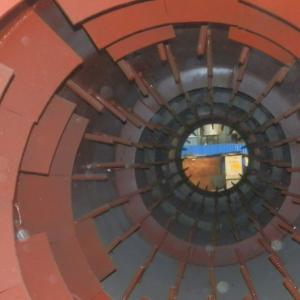

Add to Cart
Fundamental Concepts of Food Industry Drying Process
Various processing methods are there for preservation of food processing units like Freezing, canning, preserving in syrup, food irradiation, salting, vacuum packaging, dehydration or drying.
Drying means removal of a liquid from a liquid/ semi-solid/ solid to produce solid product by thermal energy input causing phase change. Sometimes converts solid moisture into vapor by sublimation process. For example freeze drying with application of heat.
The process of drying needed for the purposes of storage and preservation, reduction in cost of transportation etc.
Drying is a complex Thermal process. Drying occurs by supplying heat to the wet feedstock in the form of effecting vaporization of the liquid.
Energy input may be supplied by the following
Conduction (contact or indirect dryers)
Convection (direct dryers)
Radiation (Placing the wet material in radio frequency electromagnetic field or in a microwave)
Microwave and Radio Frequency Fields
Combination of above methods
Moisture output comes out by the following ways
Vapor diffusion.
Liquid diffusion
Surface diffusion
Capillary flow (Permeability)
Poiseuille flow
Combination of above
Most of the dryers are of the convection type with direct combustion gases or hot air as the drying medium because water is the most common solvent removed in dryers
Direct Dryers (Convective): Drying medium directly contacts material to be dried and carries evaporated moisture.
Indirect dryers (Contact or conduction)
Initial period
In this first phase sensible heat is transferred to the product and the contained moisture. During this period mostly free moisture being removed with the rate of evaporation increases dramatically .
Constant rate period
In this second phase when the free moisture continue to exist on the surfaces and the rate of evaporation alters very little as the moisture content reduces. During this period, evaporation proceeds at a constant rate.
Falling rate period
In the third phase migration of moisture from the inner interstices of each particle to the outer surface becomes the limiting factor that reduces the drying rate. The film of moisture becomes exhausted and evaporation slows due to reduced surface area.
